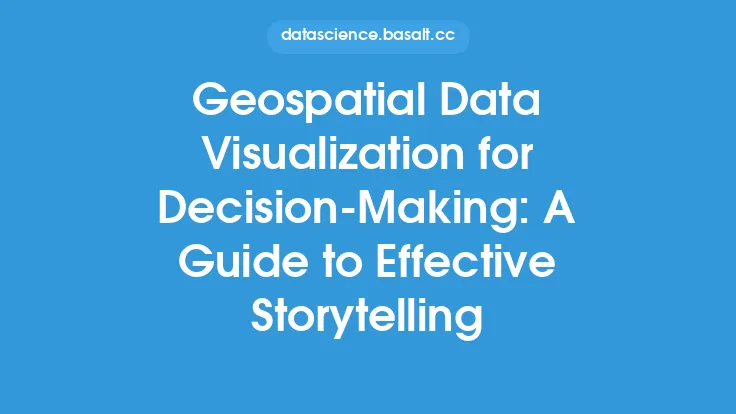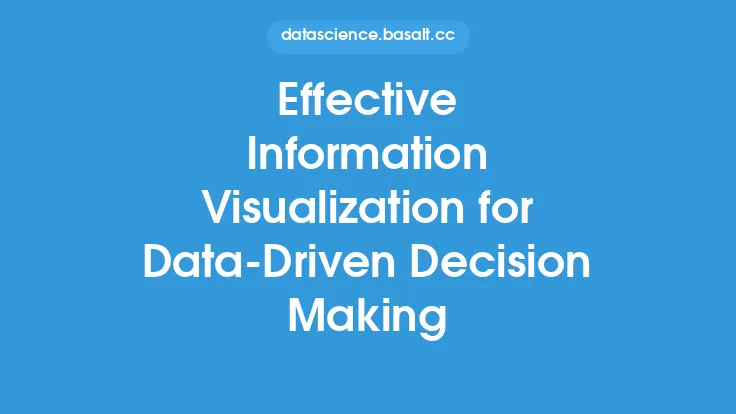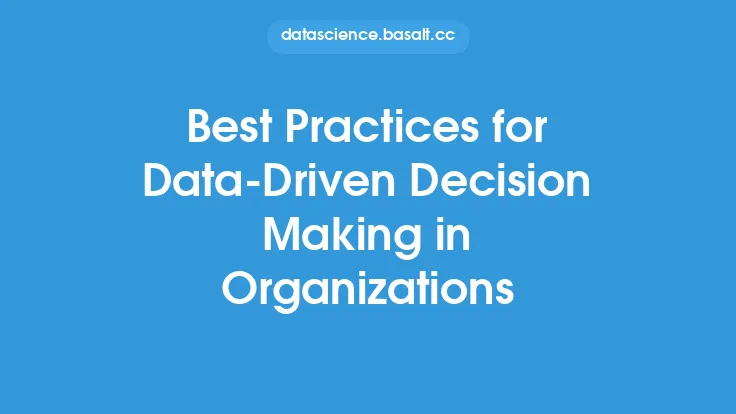In today's fast-paced business landscape, organizations are constantly seeking ways to gain a competitive edge and make informed decisions that drive growth and success. One key strategy that has emerged as a game-changer is leveraging data for smarter decision making. By harnessing the power of data, businesses can uncover hidden insights, identify trends, and make data-driven decisions that propel them forward. In this article, we will delve into the world of data-driven decision making, exploring the concepts, tools, and techniques that enable organizations to extract maximum value from their data.
Introduction to Data-Driven Decision Making
Data-driven decision making is an approach that involves using data and analytics to inform business decisions, rather than relying on intuition or anecdotal evidence. This approach has gained significant traction in recent years, as organizations recognize the importance of making decisions based on facts and evidence. By leveraging data, businesses can reduce the risk of making poor decisions, improve operational efficiency, and drive innovation. Data-driven decision making involves a range of activities, including data collection, data analysis, and data interpretation, all of which are critical to extracting insights and informing business decisions.
The Role of Data Analytics in Decision Making
Data analytics plays a vital role in data-driven decision making, as it enables organizations to extract insights and meaning from their data. Data analytics involves the use of statistical and computational methods to analyze data, identify patterns, and uncover relationships. There are several types of data analytics, including descriptive analytics, predictive analytics, and prescriptive analytics. Descriptive analytics involves analyzing historical data to understand what has happened, while predictive analytics uses statistical models to forecast what may happen in the future. Prescriptive analytics, on the other hand, uses optimization techniques to recommend courses of action. By applying data analytics to their data, organizations can gain a deeper understanding of their business, identify areas for improvement, and make informed decisions.
Data Management and Governance
Effective data management and governance are critical to leveraging data for smarter decision making. Data management involves the processes and systems used to collect, store, and manage data, while data governance involves the policies and procedures used to ensure data quality, security, and compliance. Organizations must have a robust data management and governance framework in place to ensure that their data is accurate, complete, and reliable. This includes implementing data quality controls, establishing data standards, and ensuring that data is properly secured and protected. By prioritizing data management and governance, organizations can ensure that their data is trustworthy and can be used to inform business decisions.
Data Visualization and Storytelling
Data visualization and storytelling are essential components of data-driven decision making, as they enable organizations to communicate complex data insights in a clear and concise manner. Data visualization involves the use of graphical representations to display data, making it easier to understand and interpret. Data storytelling, on the other hand, involves using narrative techniques to convey insights and recommendations to stakeholders. By using data visualization and storytelling, organizations can make their data more accessible and engaging, facilitating better decision making and driving business outcomes.
Technical Considerations for Data-Driven Decision Making
From a technical perspective, there are several considerations that organizations must take into account when implementing data-driven decision making. These include data architecture, data engineering, and data science. Data architecture involves the design and implementation of data systems, including data warehouses, data lakes, and data pipelines. Data engineering involves the development and maintenance of data systems, including data processing, data storage, and data retrieval. Data science, on the other hand, involves the application of machine learning and statistical techniques to analyze and interpret data. By investing in these technical capabilities, organizations can build a robust data infrastructure that supports data-driven decision making.
Best Practices for Implementing Data-Driven Decision Making
To implement data-driven decision making effectively, organizations must follow several best practices. These include establishing a data-driven culture, investing in data talent, and prioritizing data quality. Establishing a data-driven culture involves creating an environment where data is valued and used to inform business decisions. Investing in data talent involves hiring skilled data professionals, including data scientists, data engineers, and data analysts. Prioritizing data quality involves implementing data quality controls, establishing data standards, and ensuring that data is properly secured and protected. By following these best practices, organizations can ensure that their data-driven decision making initiatives are successful and drive business outcomes.
Overcoming Challenges and Barriers
Despite the many benefits of data-driven decision making, there are several challenges and barriers that organizations may encounter. These include data silos, data quality issues, and cultural resistance to change. Data silos occur when data is fragmented and dispersed across different systems and departments, making it difficult to access and analyze. Data quality issues arise when data is inaccurate, incomplete, or inconsistent, making it unreliable for decision making. Cultural resistance to change occurs when employees are resistant to adopting new data-driven approaches, often due to fear or lack of understanding. By acknowledging and addressing these challenges, organizations can overcome the barriers to data-driven decision making and achieve success.
Conclusion and Future Directions
In conclusion, leveraging data for smarter decision making is a powerful strategy that can drive business success and growth. By harnessing the power of data, organizations can uncover hidden insights, identify trends, and make informed decisions that propel them forward. As data continues to play an increasingly important role in business decision making, organizations must prioritize data management, data governance, and data analytics to extract maximum value from their data. By staying ahead of the curve and embracing data-driven decision making, organizations can achieve a competitive edge and drive business outcomes in an ever-changing business landscape.





